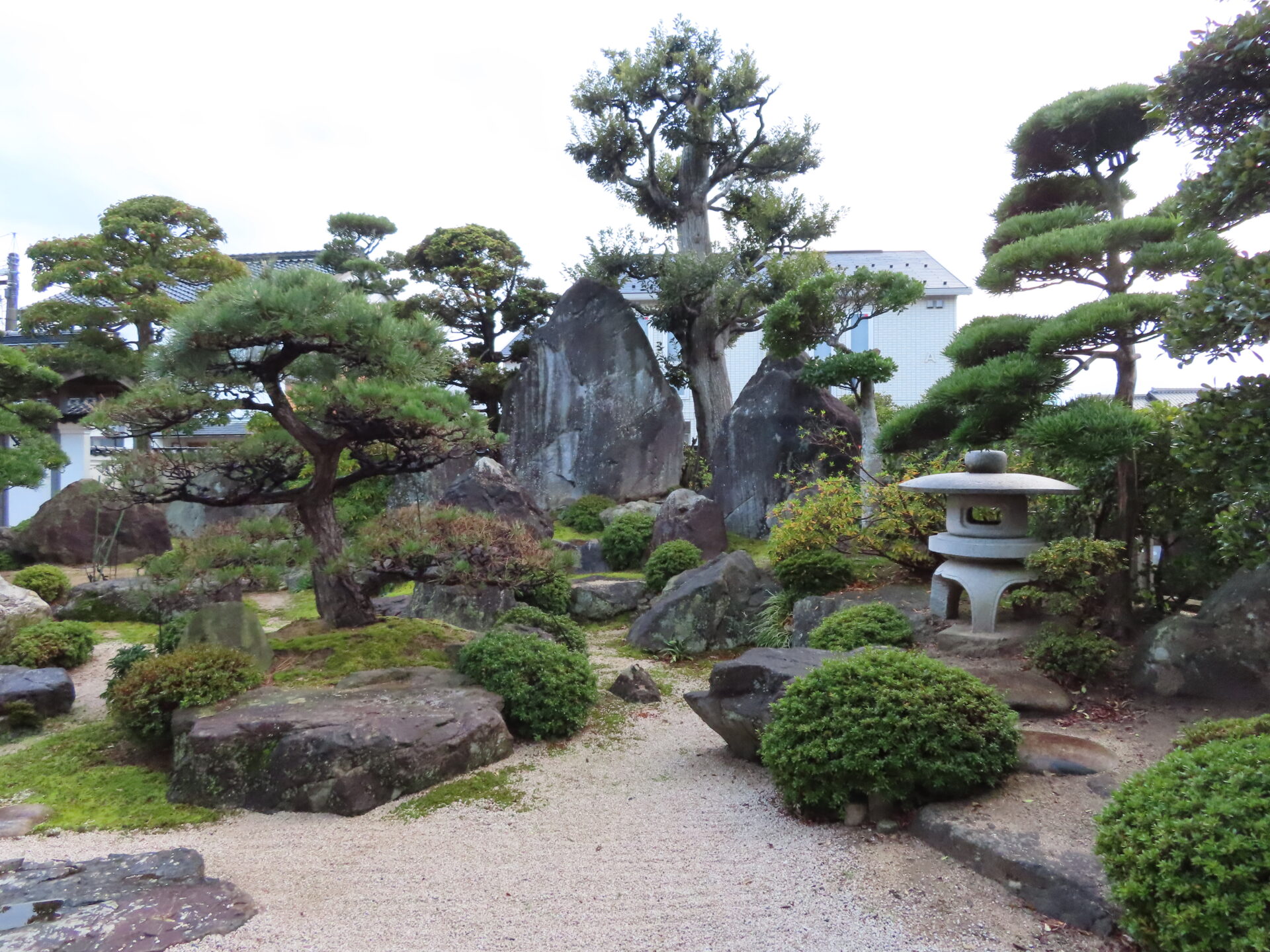雪見灯ろうは、大きな傘が魅力の可愛らしい姿をしていて、日本国中の日本庭園で使われている人気の灯ろうです。名園と呼ばれる日本庭園の多くに見ることができますが、民間の庭にも必ずと言っていいほど使われています。島根県松江市には、来待石を使った灯ろうが全国的にも有名です。出雲地方の独特の灯ろうとして出雲灯ろうと呼ばれています。
よく見ると形は様々ですが、かさの大きい特徴は同じです。しかし、足は4本であったり3本であったり、それ以外であったりします。
中でも3本足は、どのような向きに置くのが正解でしょうか。これについて日本の造園教育の創始者である故上原敬二先生が解説していますので、内容を見ていきましょう。
参考:上原敬二、石庭のつくり方、加島書店、1996
香台からの習わし
雪見型のような三脚の灯ろうを据え付ける時に、正面つまり上座に対して、1本の足か2本の足かのいずれを向けることになります。どちらの足を向けるのが本格であるかというと、2本の足を向ける方が原則となります。
これは、床の間に置く香台の置き方に見習うことができます。
香台は、掛軸に仏が描かれていれば軸の前に置くのですが、香台は仏に供するものである故、仏の方が正面となります。よって、仏に向かって2本足を揃えて対します。逆に人から見ると、人に向かって1本足が向きます。
逆に仏画がなく、客人がその香台を賞する時は、客が本位となりますから、客の方に向かって2本足が揃います。
庭の場合は、灯ろうの奥に三尊石(仏像の三尊仏をイメージした石組)とか、またはそれに準ずる石が据えられていれば、その方に2本足を向けますので、灯ろうに対する人に対しては1本足が手前に来ます。
これは香台の足の置き方に準拠しているのです。

水辺との兼ね合い
雪見灯ろうは、浮き見灯ろうがなまって雪見と言われたように、水辺に姿を浮かせて見るのが一般的です。その際、灯ろうが水に投影する姿を考えると、なるべく水辺近くに据える方が、水面に投影しやすくなります。
投影するのは雪見灯篭の灯袋になりますので、火袋が最も水辺に近くなるのは、2本足を手前にした時になります。1本足を手前にすると、上から見て三角形の頂点が手前に来るので、火袋のある中心から頂点までの距離となります。しかし、2本足を手前にすると、上から見て三角形の1辺を2分した点と、火袋のある中心との距離となり、最短となります。
よって、雪見灯ろうを水辺に浮かせて見るという視点においても、2本足が手前に来る方が理にかなっているということになります。
しかし、実際は水辺の汀線に沿って2本足を揃えるのわざとらしくて趣に欠けます。よって、少し足をずらして置くことが多くあり、その点は庭師の感覚によるさじ加減が加わるといったところでしょうか。

雪見灯ろうはどこにでも見られる人気灯ろうです。しかし、その向きについては意外に知られていません。灯ろうの向きの意味が分かれば、日本庭園も奥深く鑑賞できます。この庭園の灯ろうの向きは何故この向きに庭師が置いたのだろうか。と意味を探って鑑賞することで、その庭園に対する願いや魂が伝わることでしょう。


